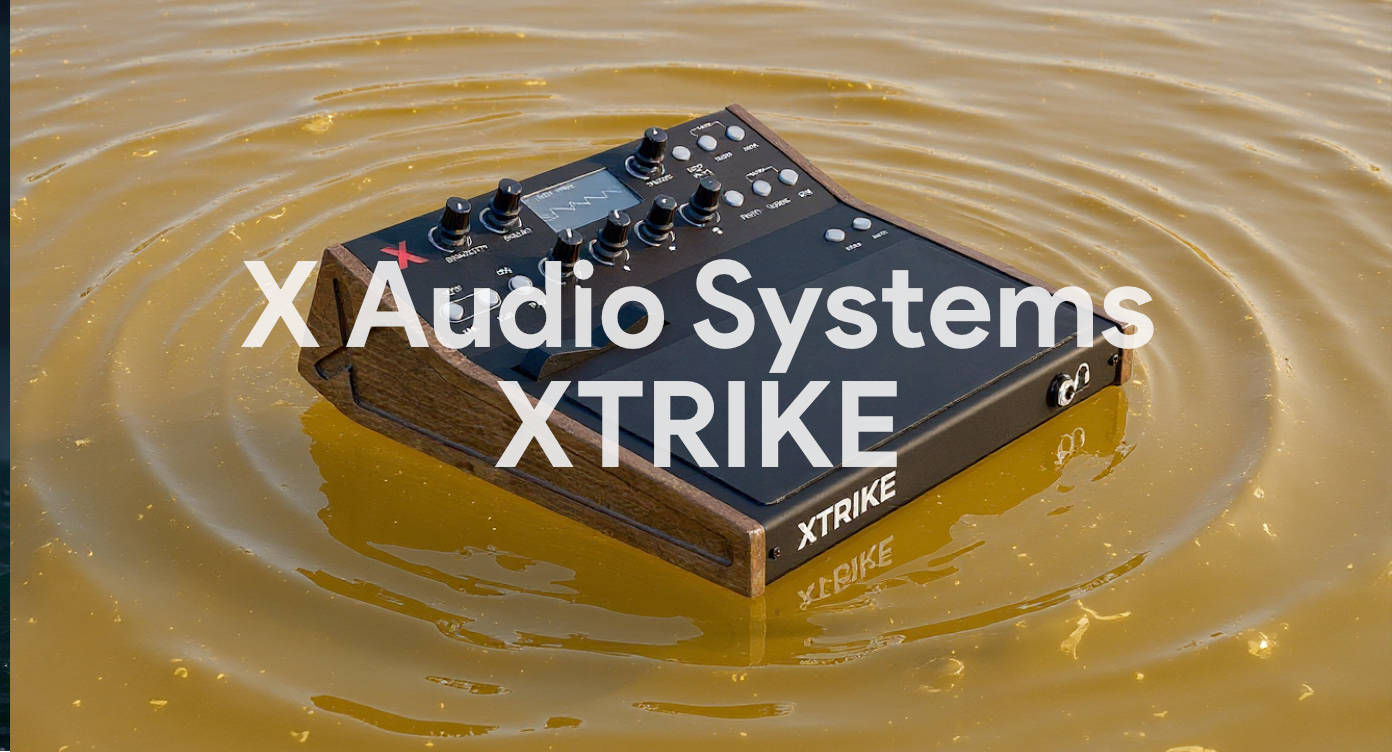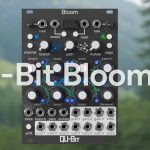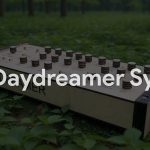The Instrument That Thinks Like a Drummer, Sounds Like the Future
Most synthesizers still cling to the 12th-century keyboard as their primary interface—a somewhat absurd situation when you consider we’re dealing with instruments capable of sounds that Bach could never have imagined. But X Audio Systems’ XTRIKE boldly abandons this centuries-old paradigm, asking a provocative question: what if synthesizers were meant to be struck, not pressed?
This isn’t just another wavetable synthesizer with a quirky controller. The XTRIKE represents a fundamental reimagining of how we interact with electronic sound, treating synthesis as a percussive, tactile art form rather than a pianistic one.
Philosophy Meets Percussion: Impact as Expression
X Audio Systems has never been content with conventional approaches. Their recently discontinued BEATS FM—a radical hybrid synthesizer that used radio signals as sound sources—established them as fearless explorers of synthesis frontiers. The XTRIKE continues this tradition, but with a more focused vision: what happens when you design a synthesizer specifically around impact and gesture rather than melody and harmony?
The answer lies in the instrument’s revolutionary interface, which combines a magnetic bender with an expressive tactile pad. This isn’t a gimmick or novelty—it’s a serious rethinking of musical expression that invites entirely new performance techniques and compositional approaches.
Beyond the Keyboard: A Tactile Revolution
The most striking aspect of the XTRIKE is what’s missing: there are no keys, no traditional controllers, no familiar reference points from acoustic instrument design. Instead, you’re presented with a soft, impact-responsive pad that transforms touch gestures into musical events. Combined with the magnetic bender, this creates an interface that’s simultaneously primitive and futuristic—like discovering fire, but for synthesis.
The tactile pad responds to the dynamics, speed, and character of your strikes, translating physical gestures into nuanced musical expression. It’s an approach that feels more like playing a tabla or cajon than operating a synthesizer, yet the sounds it produces are purely electronic and thoroughly modern.
Dual-Daisy Architecture: Brains for Brawn
Beneath this unconventional interface lies equally innovative engineering. The XTRIKE is powered by dual Daisy chips—one managing the synthesis engine, another handling the complex controller processing. This distributed computing approach provides the substantial processing power needed to translate subtle tactile gestures into responsive musical output in real-time.
Core Synthesis Features:
- 4-voice polyphonic wavetable synthesis
- User-drawable wavetables directly in hardware
- Built-in effects including analog-controlled delay
- Advanced audio-tuning and micro-tuning engine
- Support for exotic scales and alternative tuning systems
Performance and Sequencing:
- Dynamic 16-step sequencer
- 20-second stereo looper with multi-layering capabilities
- Real-time gesture recording and playback
- Seamless integration between sequenced and performed elements
The Sound: Percussive Precision Meets Wavetable Sophistication
While technical specifications matter, the XTRIKE’s true innovation lies in how it sounds when played through its intended interface. The impact-driven approach naturally emphasizes the attack and transient characteristics of wavetable synthesis, creating sounds that feel both aggressive and nuanced.
The 4-voice polyphony might seem limiting compared to software alternatives, but it’s perfectly matched to the instrument’s percussive nature. Four voices provide enough harmonic complexity for rich chords and layered textures while maintaining the clarity and punch that impact-based performance demands.
The built-in looper transforms the XTRIKE from a novel controller into a complete performance instrument. The 20-second capacity with multi-layering capabilities allows for complex, evolving compositions built entirely through real-time gesture and impact.
Craftsmanship in Progress: The Prototype Evolution
Currently in prototype phase, the XTRIKE embodies X Audio Systems’ commitment to refinement over rushed release. The development team’s transparency about their iterative process reveals genuine dedication to creating something truly special rather than simply novel.
Their current focus on improving the tactile pad’s responsiveness and sensitivity demonstrates understanding that this interface isn’t just a controller—it’s the soul of the instrument. The move from a glued silicon pad to a mechanically isolated, PCB-integrated design shows serious engineering commitment to maximizing expressive potential.
The exploration of materials for the side panels—currently featuring beech wood construction—reflects the same attention to both aesthetic and functional details that distinguished their previous instruments.
Visual Interface: Where Graphics Meet Gesture
The XTRIKE features what developers describe as a “visually stunning and highly intuitive” graphical display. In an instrument so focused on tactile interaction, visual feedback becomes crucial for understanding the relationship between gesture and sound, parameter adjustment, and wavetable manipulation.
The ability to draw wavetables directly in hardware suggests an interface that’s both immediate and sophisticated—bridging the gap between the abstract world of wavetable synthesis and the physical reality of touch-based performance.
Connectivity: Bridging Worlds
Despite its revolutionary interface, the XTRIKE doesn’t exist in isolation. The rear panel connectivity reveals an instrument designed to integrate with both traditional and experimental setups:
MIDI Integration:
- 5-pin MIDI interface for traditional sequencing and control
- Clock in/out for synchronization with other instruments
- Full integration with DAW and hardware sequencer workflows
Audio Processing:
- Stereo input (L/R) with line/mic switching
- Stereo output on professional 6.3mm connectors
- Audio mangling capabilities reminiscent of the BEATS FM
The stereo input capability suggests the XTRIKE can function as an effects processor and audio mangler, extending its utility beyond pure synthesis into real-time audio transformation.
Performance Paradigm: Beyond Traditional Technique
The XTRIKE demands new performance techniques and compositional approaches. Traditional keyboard skills become less relevant than percussion technique, gesture control, and rhythmic sensitivity. This isn’t a limitation—it’s liberation from centuries of accumulated musical assumptions.
The looper integration makes solo performance particularly compelling. Build rhythmic foundations through impact sequences, layer harmonic elements through gesture control, then perform melodic elements over the evolving loop. It’s a workflow that encourages musical exploration and spontaneous composition.
Investment in Innovation: Supporting the Future
Available soon through IndieGoGo with a €200 super-early-bird discount, the XTRIKE represents more than just a purchase—it’s support for genuine innovation in electronic instrument design. X Audio Systems’ crowdfunding approach allows them to maintain independence while developing truly experimental instruments.
As with any crowdfunding project, there are inherent risks, but X Audio Systems’ track record with the BEATS FM and their transparent development process suggest serious commitment to delivering a finished product.
The Future of Synthesis: Impact Over Convention
In an industry often content with incremental improvements and nostalgic recreations, the XTRIKE feels genuinely revolutionary. It’s not trying to be a better keyboard synthesizer—it’s trying to be something entirely different, something that doesn’t exist in any other form.
Whether you’re a percussionist curious about synthesis, an electronic musician seeking new expressive possibilities, or simply someone fascinated by innovative instrument design, the XTRIKE offers a glimpse into what electronic instruments might become when freed from historical constraints.
Ready to strike new ground? Visit xaudiosystems.com/xtrike to explore the development journey and join the community reimagining how we interact with sound itself.
About Me
Hi, I’m Canoy Dang. I grew up in Granada and now living in Málaga, in the south of Spain. Sound has always played a central role in my life — from early home recordings to the deeper, ongoing exploration of the modular synth world. Modular, semi-modular, and desktop synthesizers have become my main tools for expression, experimentation, and sometimes, simply for getting lost in the process.






